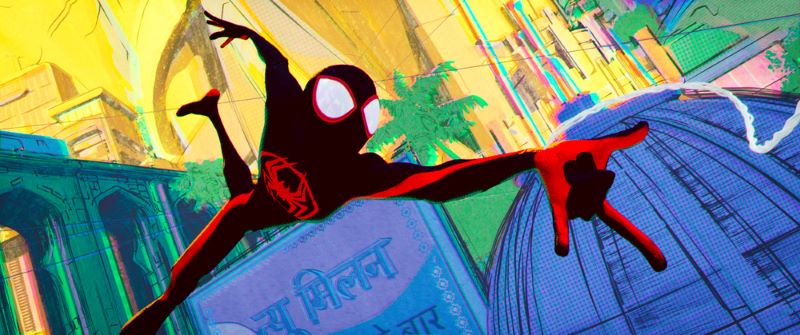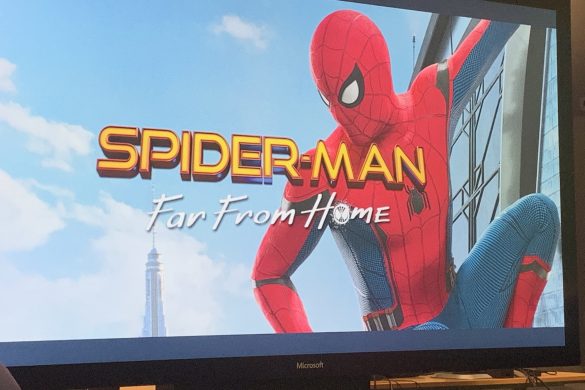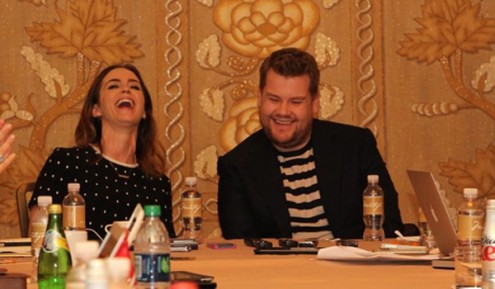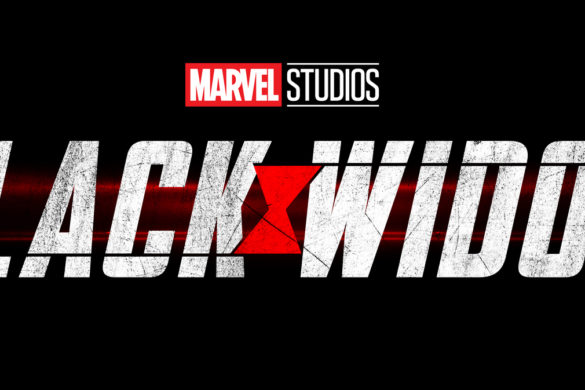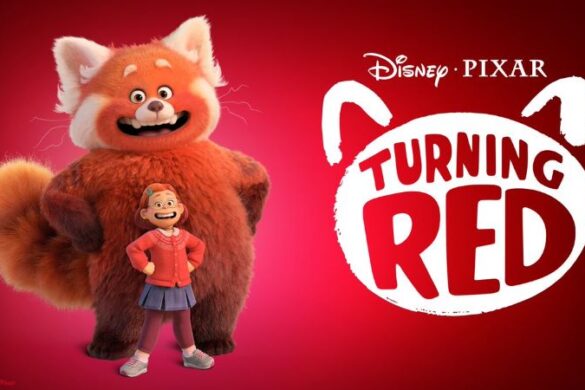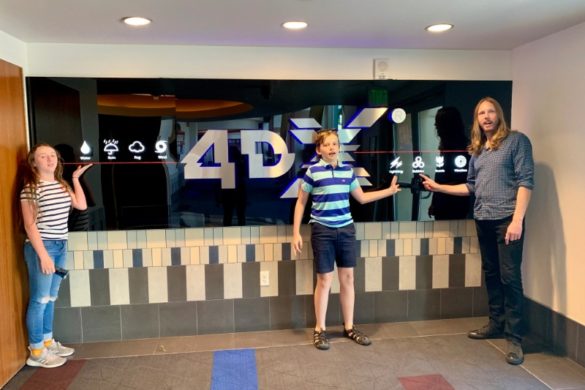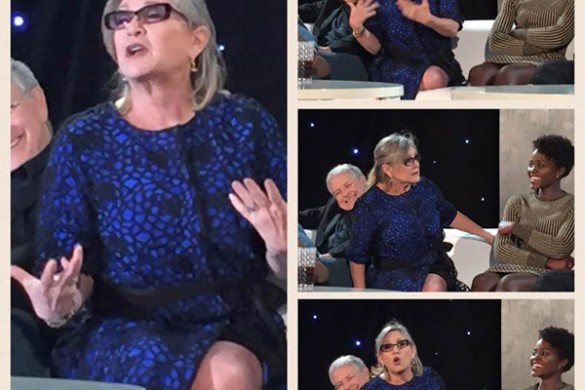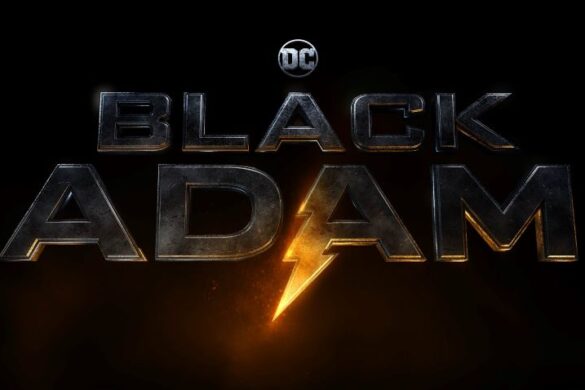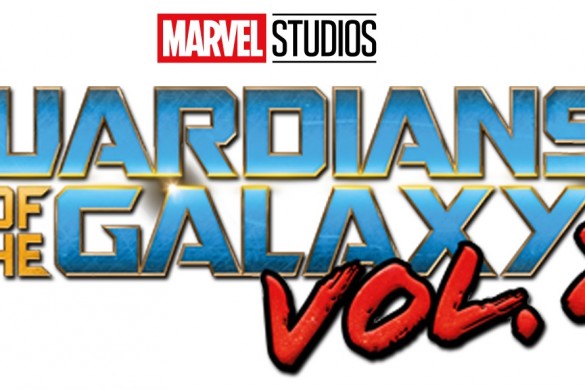Spider-Man: Across The Spider-Verse Review: Masterful Sequel That Swings High
By its nature, a sequel must be bigger and better than its predecessor. That’s quite a task for any film that sets the bar as high as “Spider-Man: Into the Spider-Verse.” But “Spider-Man: Across the Spider-Man” swings through the air to exceed those high expectations to become of the rare masterful sequels. The visually stunning next chapter continues to be more than an amalgamation of different animation styles and techniques while also being a beautifully written love letter and hysterical satire. There’s no denying that more is beyond excessive in this sequel, where Miles Morales (Shamiek Moore) joins an elite group of Spider-Heroes – actually all of them – to fight a multiversal threat that he unintentionally had a hand in. But more is done in service of the story, and what looks like a superhero epic on the surface is actually a melancholic sequel about a couple of kids trying to find their identity amongst a community that shares similar names, powers, backstories, and tragedies.
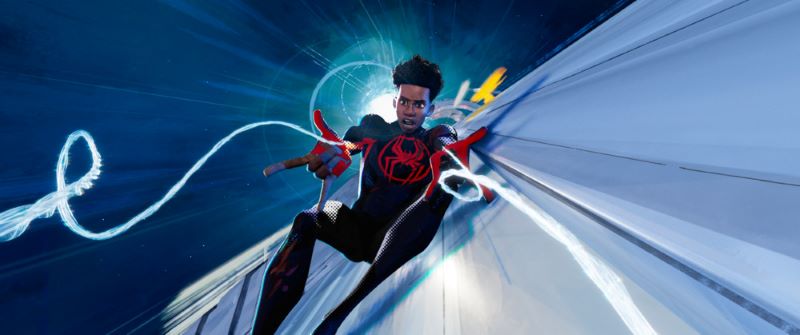
Resonating drama aside, the film follows Miles as he is reunited with his cross-universe friend and love interest Gwen Stacy (Hailee Steinfeld), to stop the faceless covered in dots dimension-hopping villain called the Spot from destroying the multiverse. Excited that she’s paid a visit after two years have passed, he is eager to prove how far he has progressed in being Earth-1610’s Spider-Man. And when he learns about the Spider Society that she is a part of, he is excited at the thought of being a part of something exclusive. But the half-Irish and half-Mexican Miguel O’Hara, aka Spider-Man 2099 (Oscar Isaac), rejects the idea of the young and budding hero being a member of their clandestine multiverse task force.
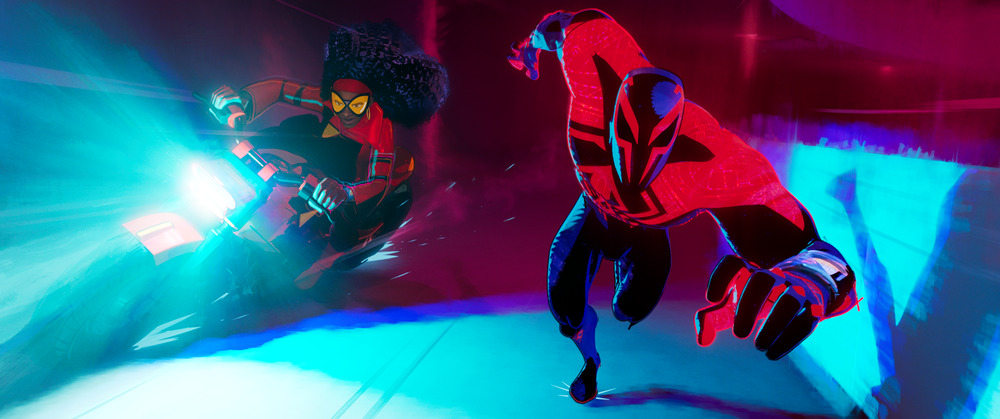
At first glance, the Spot is a pretty silly villain and doesn’t present himself as a viable threat to Miles as he clumsily commits petty crimes across Brooklyn. But writers Phil Lord, Christopher Miller, and David Callaham give the faceless inky baddie a sense of humanity and a justification for his rage. In contrast with Miles and Gwen’s loneliness as a product of them being webslingers who have endured tragedy, The Spot is burdened with unwarranted isolation because he’s rejected by his peers and family due to his transformation. And so the man with no face who has had everything taken away from him vows to do just that to the hero that made him.
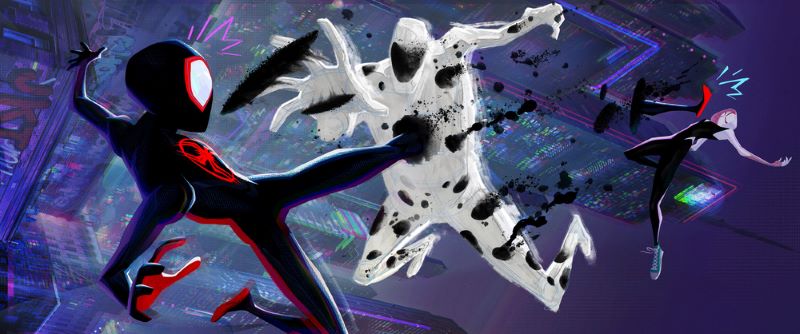
So identity and acceptance are the main themes of “Spider-Man: Across the Spider-Verse.” Miles and Gwen are two misunderstood teen webslingers searching for a place where they can belong and share their experiences openly and without judgment or fear of being arrested by their fathers, both of whom are police officers. On Earth-65, Gwen’s relationship with Captain George Stacy (Shea Whigham) is strained because she blames herself for the death of her best friend, Peter Parker. George knew what Peter meant to Gwen, and the bold and graphic treatment of vertical color streaks exemplifies the character’s emotions. She learns about the tragic tale that befalls all those who take the mantle of Spider-Man when she escapes to Nueva York, where Miguel and the supercool and very pregnant motorcycle-riding Jessica Drew (Issa Rae) lead the Spider-Society to put every single anomaly back where they belong.
It’s slightly different for Miles, who has accepted his role as Brooklyn’s Spider-Man. However, he has fallen into a false sense of security since he’s only apprehending petty thieves and has higher expectations of being the Flash. While the character has grown up physically, he’s still trying to figure out how to be a superhero without his friends. Miles sometimes prioritizes his heroism over his other responsibilities as a student and son to two loving parents, Jefferson (Brian Tyree Henry) and Rio Morales (Luna Lauren Velez). With “Across the Spider-Verse” revealing narrative parallels of all the Spider-Heroes, we start to see how vital The Spot is to Miles’ arc.
Though The Spot’s powers add to the complexity of using the multiverse as the sequel’s plot. As he hops to and from one Earth to the next, we see how expansive the multiverse is in “Across the Spider-Verse.” With so many of them, it leaves plenty of room for some unexpected, hilarious cameos and Easter eggs if you’ve consumed nearly all Spider-Man media from TV, Film, books, anime, comic books, manga, and more. As “Across the Spider-Verse” visits worlds we’ve never been to, the film establishes special rules, circumstances, and design sensibilities. True to its comic book-to-life form, some rules are explained through dialogue or anecdote text blurbs. It’s a massive sequel with much ground or Earths to cover. But seeing all of the respective Earths that these Spiders are charged with protecting is worthwhile because they all have stylistically unique renderings. Gwen’s Earth-65 are these beautiful streaks of vertical line colors that resemble a mood ring. They elicit specific emotions and change according to what is happening in the frame, whether it’s bright and joyful or dark and somber.
Contrast that to O’Hara’s Nueva York on Earth-928, where there are two planes, one of which is a bright and futuristic city mirroring the budding potential and optimism. At the same time, the underground is gritty and dark. These contrasting worlds reflect Miguel’s personality and intent, with the latter being more serious and the former representing his idealism.
While the comic book esthetics, eye-popping graphics, and cameos are pleasing for any Spider-Man fan watching, the film always remembers that the real heart comes from the characters that the audience connects with. Sure, the webslinging may look cool, the expositional and text blurbs are fun to read, and the text as action has a visual impact, but take that all away. Instead, you have a story about real people with real problems who face dilemmas and have their moral compass tested. And Miguel teaches a harsh lesson about the price of being Spider-Man to Miles by displaying archival footage and graphics of what happened to all of the other Spiders across the Spider-Verse. It’s a disheartening aspect that comes with the Webslinger territory, yet it helps shape Miles. Bad things may happen to people, and it will shape them, but good things happen too. But Miles refuses to have his story written that way and defiantly chooses to do his own thing.
Of course, Miles’ journey across the various Spider-Verses takes him to multiple Earths, where he encounters other Spiders like him. Spider-Man India’s Mumbattan is a hybrid of Manttanhan and Mumbai, where the modern and traditional worlds meet. Its design feels ancient yet very contemporary, as noted by the skyscrapers resembling temples. And to watch how Miles navigates this Earth clashes with Pavitr Prabhakar (Karan Soni). Pavitr isn’t like his Earth-1610 counterpart. He has more confidence, gets good grades, and is extremely handsome. Although he, too, suffered a great tragedy, he masks it with optimism and a sunny disposition that tends to rub Miles the wrong way. But like all Spiders, Pavitr is very shy around his crush. This world also introduces us to Daniel Kaluuya’s Hobie Brown, aka Spider-Punk, a badass Punk whose design draws inspiration from the London punk scene of the 1970s. Unlike some of the other Spiders’ cleaner looks, Spider-Punk’s design is a messy, unpolished collage of different media all glued and taped together in a way that opposes the designs of his fellow Spider-Heroes. It’s fun to see how Spider-Punk uses his guitar as a sonic weapon and how the action graphics are deeply connected to his character.
What’s more, there may be a love triangle when Miles sees how starry-eyed she gets whenever she talks about Hobie. Of course, that creates a sense of jealousy for our titular hero. At the same time, Miles wants to be more like Hobie and views him as the older brother he never had.
And as Miles grows as a person and hero, we see how far his friends have come. Among those who have changed for the better is Peter B. Parker, a Spider-Man who was afraid to be a parent but is now a father to Mayday. She is a lot of fun to watch as an untrained hero and also shows us how much of a great dad Peter is. And having all those Spider-powers opens the door for adorable moments between the other heroes.
Though the exposition is a bit dense, “Spider-Man: Across the Spider-Verse” reminds us that the characters are the film’s beating heart and that all the visuals are just there to make it look like illustrations come to life. By challenging what we know about Spider-Man’s mythology and how it parallels with the other Spider-Verses, we see how Miles discovers his identity and individuality in his search for acceptance through friends who can relate to him. Part of that is echoed in Rio’s wisdom, where she hopes that no matter where he goes and who he is with, they recognize he has big dreams, and he never forgets where he came from.
And so “Spider-Man: Across the Spider-Verse” is more than half of a story that mixes and matches heroes from other multiverses. It continues to be a fascinating story of a bi-racial superhero on a journey of self-discovery while remaining a love letter and a stinging satire of Spider-Man. And the visual storytelling help convey characters’ emotions through color and graphics. And at its core, it’s a coming-of-age story that follows Miles on a quest to find acceptance while protecting the ones he loves. The best thing about this is that Lord, Miller, and Callaham put a twist on the message that anyone can wear the mask. While that idea remains true, Miles realizes how you wear it makes you the hero of your own story. And if “Spider-Man: Across the Spider-Verse” is just half of the story, I can’t wait to see where how it all ends.
9.5/10

